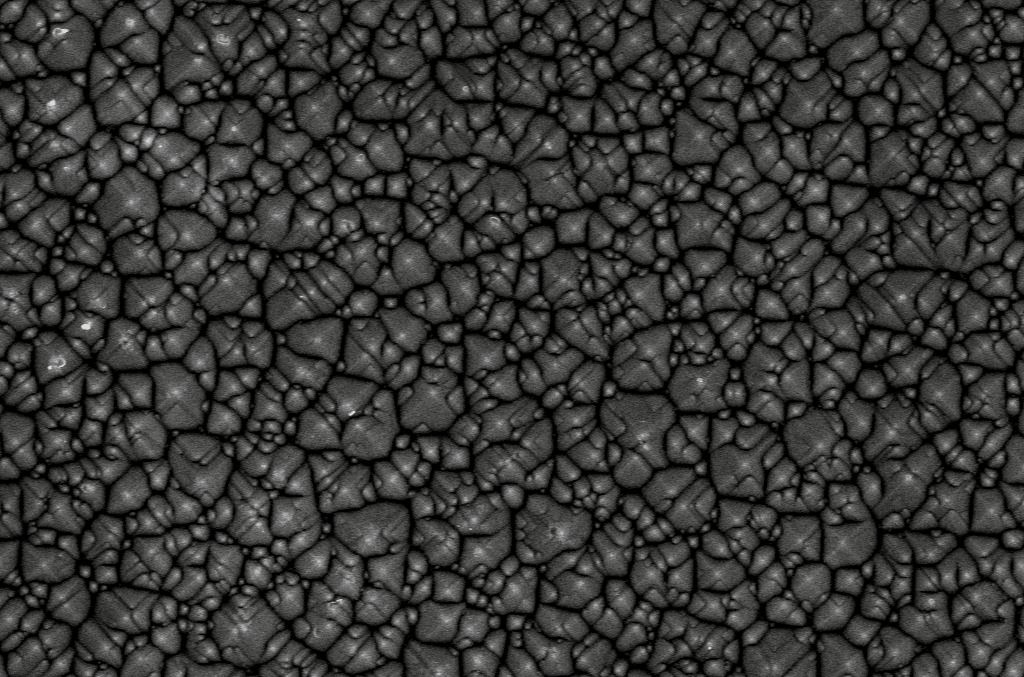

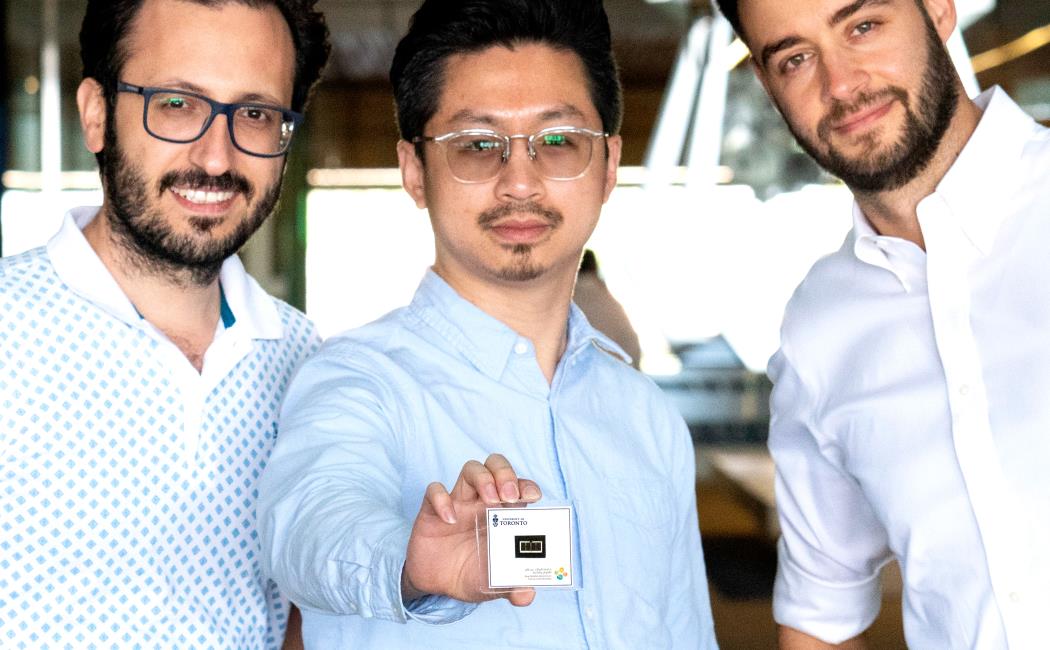
05 March, 2020
Wide–bandgap perovskites could boost the efficiency of silicon solar cells by forming tandem cells, but usually, the perovskite must be grown on a smoothed side of the silicon cell because the material is grown on the rough light-trapping side often does not fully coat the silicon surface and its rough texture is prone to phase separation. Yi Hou, Erkan Aydin, and Michele De Bastiani grew thick films of perovskite with a bandgap of ∼1.68 electron volts and used a passivant, 1-butanethiol, to limit its phase separation. The tandem cells had a certified power conversion efficiency of 25.7% and had negligible losses after 400 hours of operation.
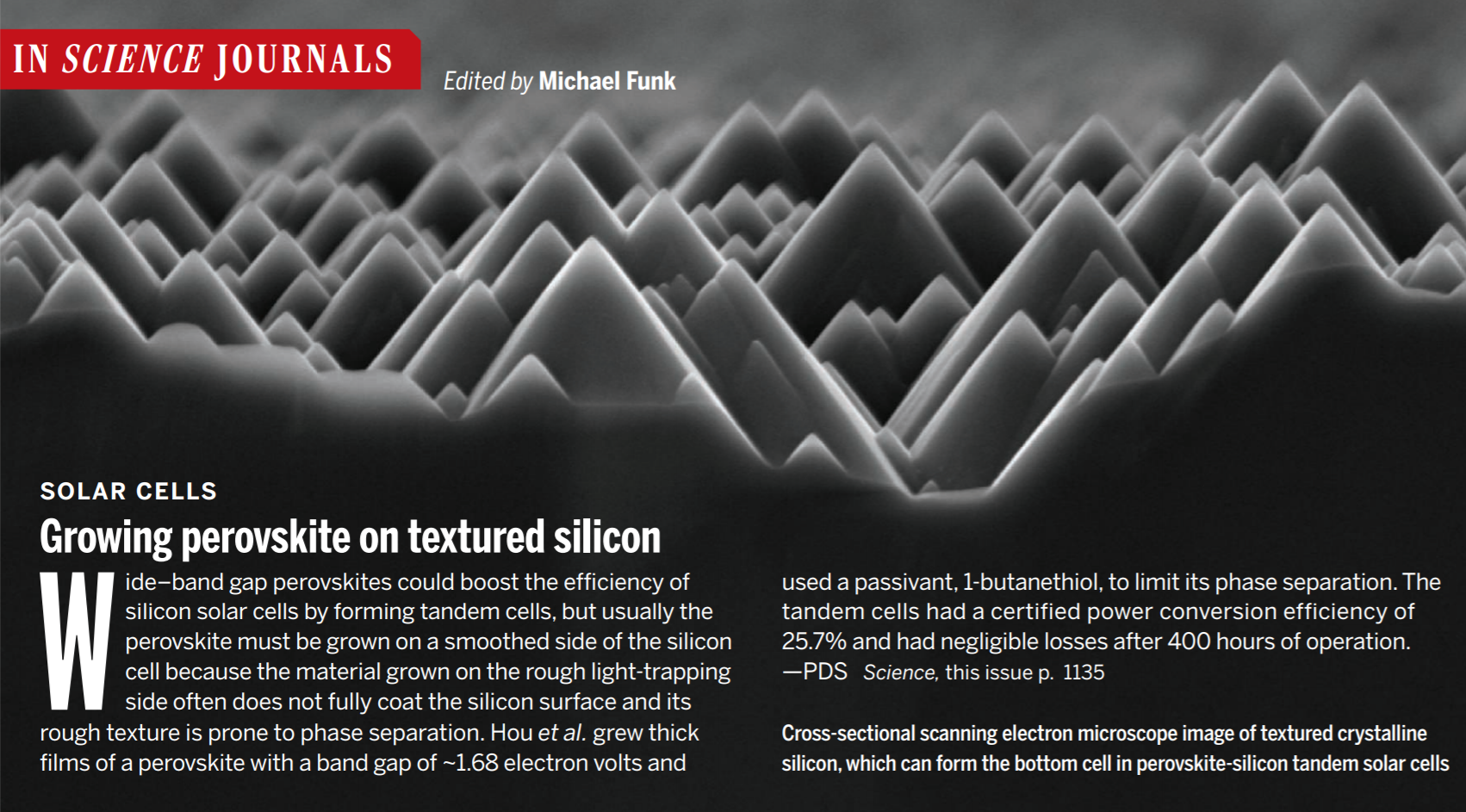
Research highlight in "Science Magazine".
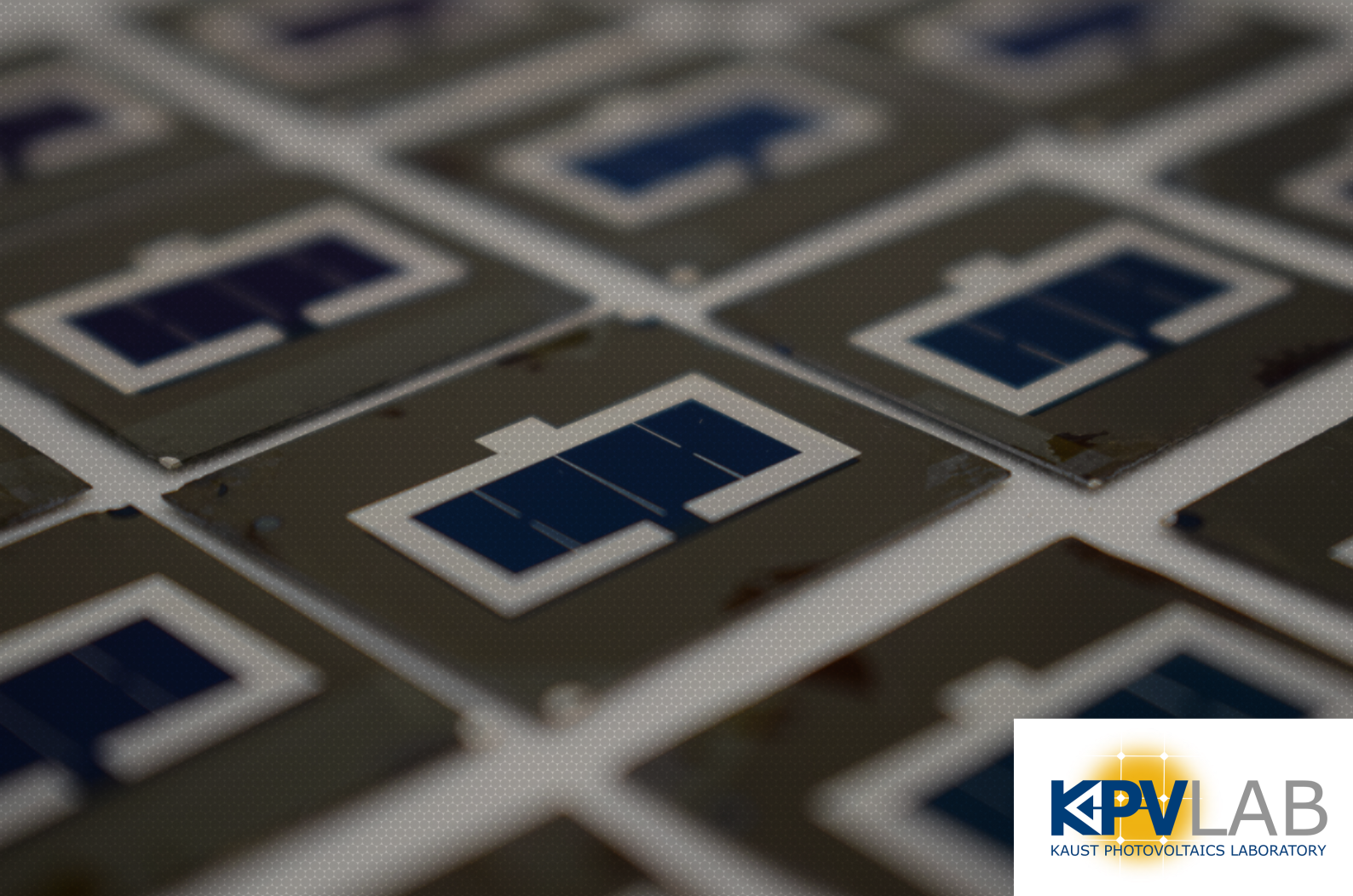
KPV-LAB's perovskite/silicon tandem solar cells layout (1 cm2) Photo: Erkan Aydin

The leading team of the project from KAUST and the University of Toronto (Left to right: Erkan Aydin, Yi Hou, Michele De Bastiani)
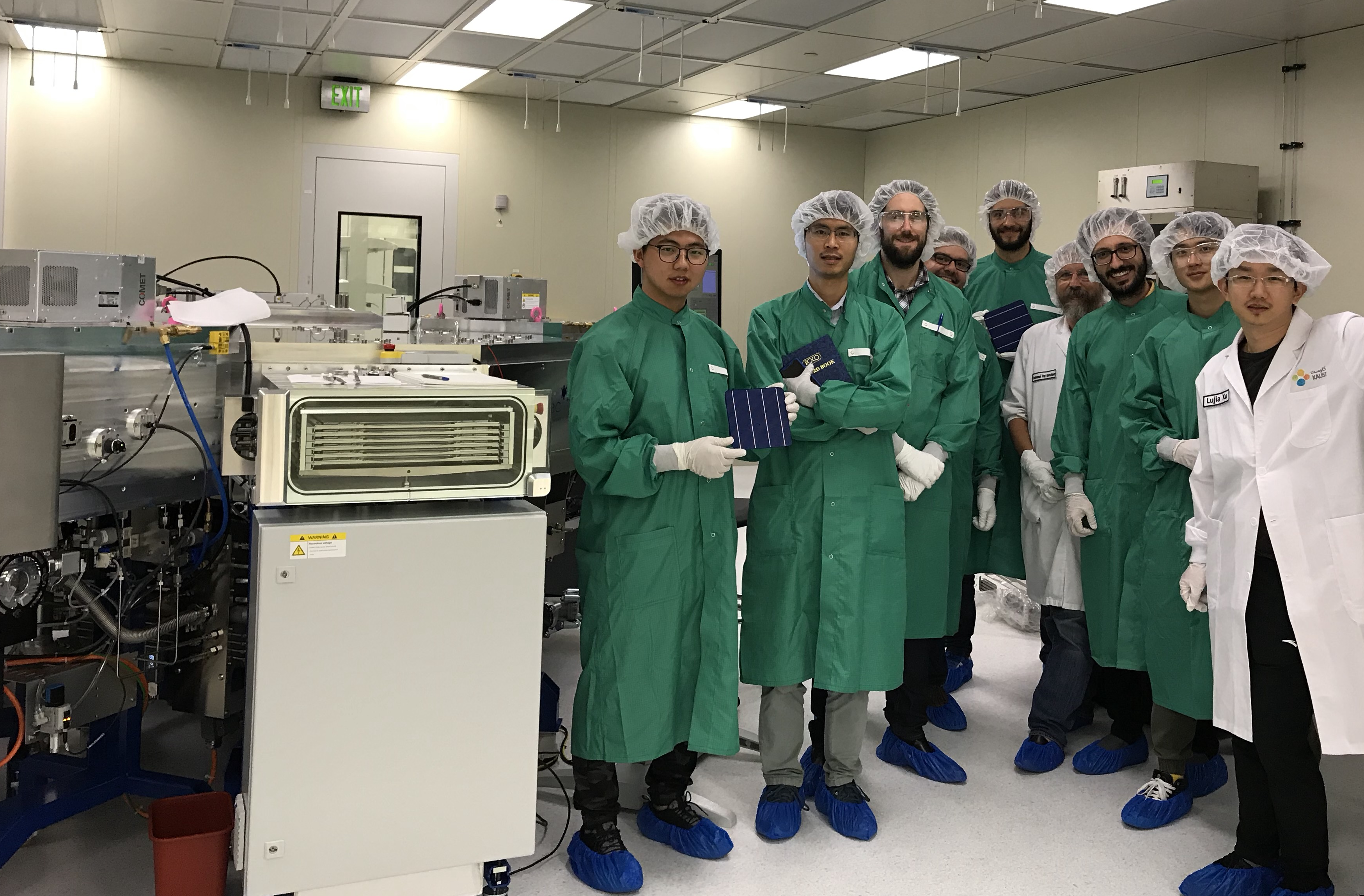
KAUST KPV-LAB's silicon heterojunction bottom cell team
Efficient tandem solar cells with solution-processed perovskite on textured crystalline silicon. Y. Hou, E. Aydin, M. De Bastiani, C. Xiao, ... , S. De Wolf, E. H. Sargent, Science 2020, 367, 1135.
Click here for the full text